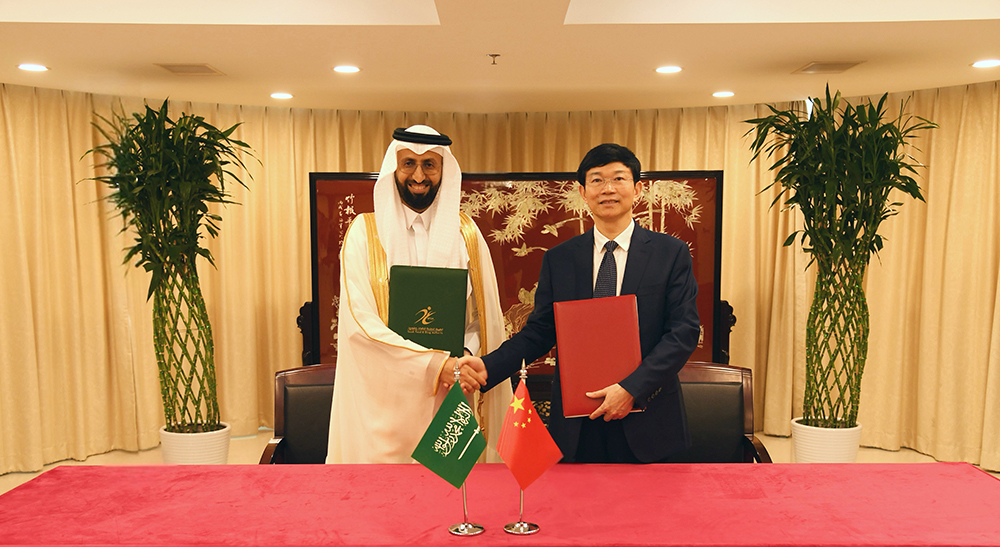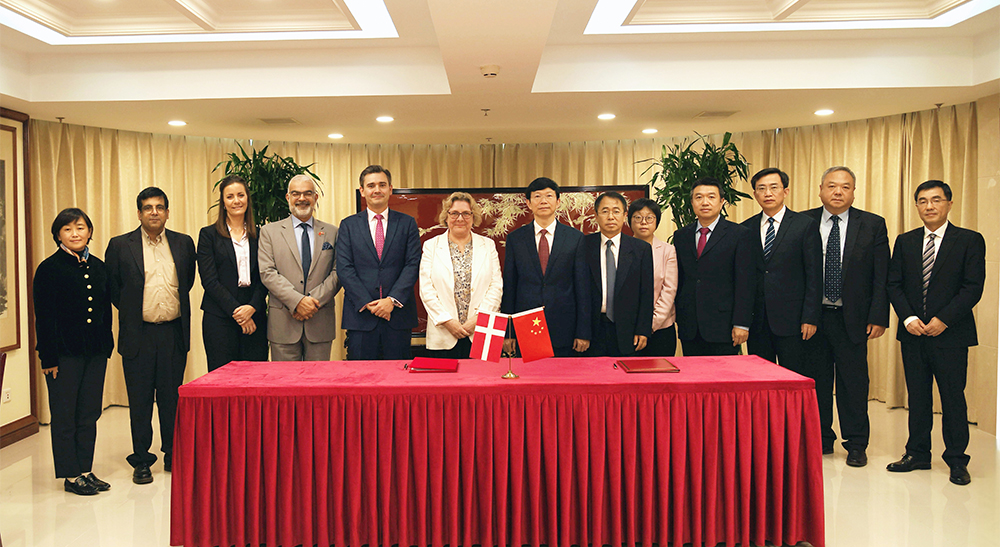配偶年龄对IVF/ICSI活产率的影响:基于59951个周期的分析
时间:2025-06-14 12:11:26 热度:37.1℃ 作者:网络
STUDY QUESTION
研究问题
Does advanced male partner’s age impact live birth rates (LBRs) in IVF treatment when female partner’s age is factored in?
在考虑女方年龄的情况下,男方高龄是否会影响体外受精(IVF)治疗的活产率(LBRs)?
SUMMARY ANSWER
主要回答
In fresh IVF cycles LBRs decline with male partner’s age ≥40 years when the female partner is aged 35-39 years, irrespective of the presence or absence of male factor; but not when the female partner is <35 years or≥40 years of age; this decline is not observed in ICSI cycles.
在新鲜IVF周期中,当女方年龄在35-39岁之间时,无论是否存在男性因素,当男方年龄≥40岁,活产率都会下降;然而,当女方年龄<35岁或≥40岁时,则不会出现这种情况;而在ICSI周期中未发现这种下降趋势。
WHAT IS KNOWN ALREADY
已知信息
Advanced paternal age is associated with declining sperm parameters, impaired embryo development, compromised pregnancy outcomes, and abnormalities in the offspring in IVF/ICSI cycles. However, data on the interaction between maternal and paternal age on IVF outcomes are very limited and inconsistent. No significant effect of male partner’s age on pregnancy outcomes has been noted in donor oocyte cycles.
男方高龄与精液参数下降、胚胎发育受损、妊娠结局不良以及IVF/ICSI周期中子代异常有关。然而,关于父母年龄对试管婴儿(IVF)结果相互作用的数据非常有限且不一致。在供卵周期中,未发现男方年龄对妊娠结局有显著影响。
STUDY DESIGN, SIZE, DURATION
研究设计、样本量、持续时间
Retrospective analysis of all eligible autologous IVF/ICSI cycles with oocyte retrieval and intended fresh embryo transfer (ET) from the UK’s national anonymized registry, published online by the Human Fertilisation and Embryology Authority (HFEA). There were 59951 cycles that qualified the inclusion criteria in the study period: 1 January 2017 to 31 December 2018.
对英国人类受精与胚胎学管理局(HFEA)在线发布的全国匿名登记数据中,所有符合条件的体外受精(IVF)/卵胞浆内单精子注射(ICSI)周期进行了回顾性分析,这些周期均进行了取卵并计划行新鲜胚胎移植(ET)。在2017年1月1日至2018年12月31日期间,共有59951个周期符合纳入标准。
PARTICIPANTS/MATERIALS, SETTING, METHODS
研究对象/材料、场景、方法
Couples underwent IVF (n=27 226) or ICSI (n=32 725) treatment with partner’s sperm followed by fresh ET due to unexplained (n=31 846), tubal (n=6605), or male infertility (n=22 905). Treatment cycles with endometriosis (n=5563), ovulatory disorders (n=9970), female partner aged >44 years (n=636), and PGT (n=280) were excluded. Women were stratified by age in the following groups: <35, 35-39, 40-42, and 43-44 years; male partner’s age as <35 (reference group), 35-37, 38-39, 40-42, 43-44, 45-50, 51-55, 55-60, and >55 years as presented by the HFEA. Some age-groups were merged in the analysis to increase the population size. Chi-square test was used to compare binominal data; and multiple logistic regression to find any association between male and female age-groups on live birth adjusting for other confounders that had a significant effect on this outcome.
研究对象为原因不明(n=31 846)、输卵管(n=6 605)或男方因素(n=22 905)不孕而接受IVF(n=27 226)或ICSI(n=32 725)治疗并进行新鲜胚胎移植(ET)的夫妇。排除了子宫内膜异位症(n=5 563)、排卵障碍(n=9 970)、女方年龄>44岁(n=636)以及进行了胚胎植入前遗传学检测(PGT,n=280)的治疗周期。根据女方年龄进行分组:<35岁、35-39岁、40-42岁和43-44岁;男方的年龄分组则参照HFEA标准,分为<35岁(参照组)、35-37岁、38-39岁、40-42岁、43-44岁、45-50岁、51-55岁、55-60岁和>55岁。在分析过程中,对某些年龄组进行了合并以增加样本量。采用卡方检验比较二项数据,并采用多元逻辑回归分析,在调整其他对结果有显著影响的混杂因素后,探讨男女年龄与活产之间的关系。
MAIN RESULTS AND THE ROLE OF CHANCE
主要结果与偶然因素的作用
LBRs per oocyte retrieval as well as per ET were no different across the male partners’age-groups when the female partners were aged <35 years or in 40- to 44-year age-group, whether male-factor infertility was included or excluded and whether it was IVF or ICSI cycle. However, when IVF was the method of insemination in the female partner’s age-group of 35-39 years, LBRs per oocyte retrieval dropped significantly from 27.0% in the male age-group of <35 years (reference group) to 22.9% (P=0.002), 22.0% (P=0.006), and 18.8% (P= 0.004) in 40-44, 45-50, and >50 years age-group, respectively in population that included male-factor infertility. Likewise, LBR per retrieval declined from 27.6% in 35 years age-group to 23.5% (P =0.002) and 22.2% (P=0.002) in 40-44 years and older groups, respectively in cycles without male infertility. However, there was no impact of male age on LBR in any female partner’s age-group when ICSI was performed in either the presence or the absence of male infertility. A similar decline in the LBR per retrieval and per ET was observed in female age-group of 35-39 years in the analyses with IVF and ICSI cycles combined. The inference remained unchanged when only the first treatment cycle was included (per patient analysis) or when single blastocyst transfer cycles were analysed, eliminating the impact of the number and stage of embryo transferred. After adjusting for confounders including male age, female age, number of previous treatment cycles, previous live birth, insemination method (IVF or ICSI), number of embryos transferred, and day (stage) of ET, male partner’s age remained significantly associated with LBR in the female age-group of 35-39 years, but not when women were in <35 years or 40 to 44 year age-group, in population including as well as excluding male infertility. Miscarriage rates per single ET trended to rise (non-significantly) in IVF as well as ICSI cycle only when men were over 55 years and female partners aged <40 years, particularly when male infertility was excluded.
当女方年龄<35岁或在40-44岁之间时,无论是否包含男性因素,也无论是IVF还是ICSI周期,男方各年龄组每次取卵和每次胚胎移植(ET)的活产率(LBR)均无显著差异。然而,女方年龄35-39岁因男方因素接受IVF,每次取卵的LBR随男性年龄增加而明显下降。以小于35岁为参考组,其活产率为27.0%, 40-44岁组的22.9%(P=0.002),45-50岁组的22.0%(P=0.006)和>50岁组的18.8%(P=0.004)。而除外男性因素,每次取卵的LBR亦如此。35岁年龄组为27.6%,40-44岁组23.5%(P=0.002)和>45岁组的22.2%(P=0.002)。但是,如果行ICSI,无论是否存在男性因素,男方年龄均不影响女方的LBR。女方年龄35-39岁,且将IVF和ICSI周期合并分析,同样发现每次取卵和每次ET的LBR也出现了类似的下降。如果只将首个治疗周期或分析单个囊胚移植周期纳入分析(每位患者单独分析),排除了移植胚胎的数量和分级的影响,结论仍相同。在调整了包括男方年龄、女方年龄、既往治疗周期数、既往活产、受精方法(IVF/ICSI)、移植胚胎数量和ET天数(胚胎分期)等混杂因素后,无论是否包含男性不育人群,男方年龄仍与女性年龄35-39岁组的LBR显著相关,但与女方年龄35岁或40-44岁组的LBR无关。仅当男方年龄>55岁且女方年龄<40岁时,特别是排除男性因素后,每次单胚移植的流产率才会有非显著性的上升趋势,IVF、ICSI周期均如此。
LIMITATIONS, REASONS FOR CAUTION
局限性及谨慎性考量
Information on ovarian reserve and stimulation protocols was not available. This probably would have had little impact, given the large size of the population studied. The ages of female and male partners were given in groups necessitating taking them as ordinal variable in the regression analysis. Cumulative LBRs could not be determined as the information on subsequent frozen-thawed ET cycles could not be traced and the severity or cause of abnormal semen parameters were not present in the HFEA database. Some age-groups with small number of patients were merged to obtain a reliable result.
本研究未提及卵巢储备和促排卵方案相关信息。也许是因为研究人群的规模较大,这些信息对于结果影响甚微。男女双方的年龄以分组形式给出,因此需在回归分析中将其作为有序变量处理。由于无法追踪后续冻融胚胎移植周期的信息,且HFEA数据库中未包含异常精液参数的严重程度或原因,因此无法确定累积活产率(LBRs)。为确保结果可靠,部分样本量较少的年龄组进行了合并处理。
WIDER IMPLICATIONS OF THE FINDINGS
研究发现的更广泛意义
This is the largest clinical data to support the laboratory evidence of the ability of oocytes from young women to reverse the age-related deterioration of sperm quality. As the ageing oocytes lose this reparatory mechanism, the ageing sperm exert a detrimental effect on the LBR. The message of this study is important in counselling of patients and planning out treatment. Further research on interaction between male and female age will increase our understanding of this matter and help to establish whether ICSI procedure is more appropriate for older male partners even when there is no apparent semen abnormality.
这是迄今为止最大规模的临床数据,支持了实验室关于年轻女性卵母细胞可以逆转与年龄相关的精子质量下降的证据。随着卵母细胞老化,这种修复机制将丧失。老化的精子会对活产率(LBR)产生不利影响。这项研究的结果对于患者的咨询和治疗计划至关重要。对男女双方年龄之间相互作用的进一步研究将增进我们对这一问题的理解,并有助于确定在没有明显精液异常的情况下,ICSI周期是否更适合年龄较大的男方。
参考文献:A K Datta, S Campbell, R Diaz-Fernandez, G Nargund, Livebirth rates are influenced by an interaction between male and female partners’ age: analysis of 59 951 fresh IVF/ICSI cycles with and without male infertility, Human Reproduction, Volume 39, Issue 11, November 2024, Pages 2491–2500, https://doi.org/10.1093/humrep/deae198


